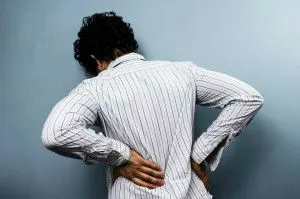Pain patches are especially popular in China, with nearly half the population deriving their pain relief from the Band-Aid like patch. In Europe, an estimated one-quarter of Europeans relieve their pain this way. Here in the US, nearly 90 percent of the population pops a pill for pain relief, but the patches have been becoming increasingly popular as of late.
According to USA Today, Baby Boomers are leading the trend due to the increase in aches and pains that come with aging as well as a concern about pills. But, do they work? And are they any safer than pills?
Prescription pain patches are an alternative to oral pain pills or injections. They can help prevent side effects such as stomach upset and internal bleeding that can occasionally result from taking pills. They also offer more consistent pain relief than other types of medications, but they still come with complications, including unintentional overdose.
Fentanyl pain patches are a narcotic pain reliever often used to treat chronic pain, working through the central nervous system to offer long-term pain relief. Because it’s a narcotic, it can be addictive, but it also offers some of the most effective pain relief. Just like traditional narcotic pain pills, fentanyl pain patches can be dangerous.
The patch should only be used for pain that cannot be controlled by other pain medications – and only for moderate to severe pain. These patches come with a long list of side effects, such as serious or life-threatening breathing problems, dizziness, confusion, extreme fatigue, fainting, or even loss of consciousness.
Another type of pain patch is a Lidocaine patch, sometimes called Lidoderm, which numbs the skin in the area it’s placed upon. This is a local anesthetic most commonly used to treat burning or stinging pain such as the pain from shingles.
For those taking any other prescription medications, this patch can interact with those drugs, particularly those that are prescribed for treating a heart condition. Side effects range from mild to serious, including burning or discomfort at the site of the patch, redness or swelling, hives, breathing difficulties, vomiting, confusion, weakness, dizziness and fainting.
Clearly, patches are no safer, and don’t come with fewer side effects than many medications in pill form.
If you’d rather consider a safer, natural alternative, there are a number of options.
Capsaicin. For conditions like shingles and arthritis, capsaicin is an active component of chili peppers which helps to temporarily desensitize skin nerve receptors known as C-fibers. Capsaicin ointments and creams are sold in health stores and pharmacies.
Fish oil. Taking 2,000 to 4,000 milligrams of fish oil can help relieve the pain of rheumatoid arthritis and autoimmune disorders, including lupus.

Acupuncture. This can be a very effective treatment for all types of chronic pain, and works especially well for knee osteoarthritis. Researchers believe the needles may trigger nerves to signal the brain to release endorphins that help to naturally dull pain.
Hypnotherapy. Using this technique, in which a licensed hypnotherapist guides the patient into a highly focused mental state while easing the body into deep relaxation, offers impressive results for pain relief.
When you’re in pain, it can be tempting to turn to anything that will offer quick relief, but it may be well worth looking at natural alternatives first to avoid the potential harmful side effects to the body and the mind.
-The Alternative Daily
Sources:
http://usatoday30.usatoday.com/news/health/story/2012-05-09/pain-relief-patches-pills/55652022/1
http://www.webmd.com/drugs/drug-17549-lidoderm+top.aspx
http://www.nlm.nih.gov/medlineplus/druginfo/meds/a601202.html
http://www.huffingtonpost.com/2013/09/30/dr-oz-treat-chronic-pain_n_3963264.html
